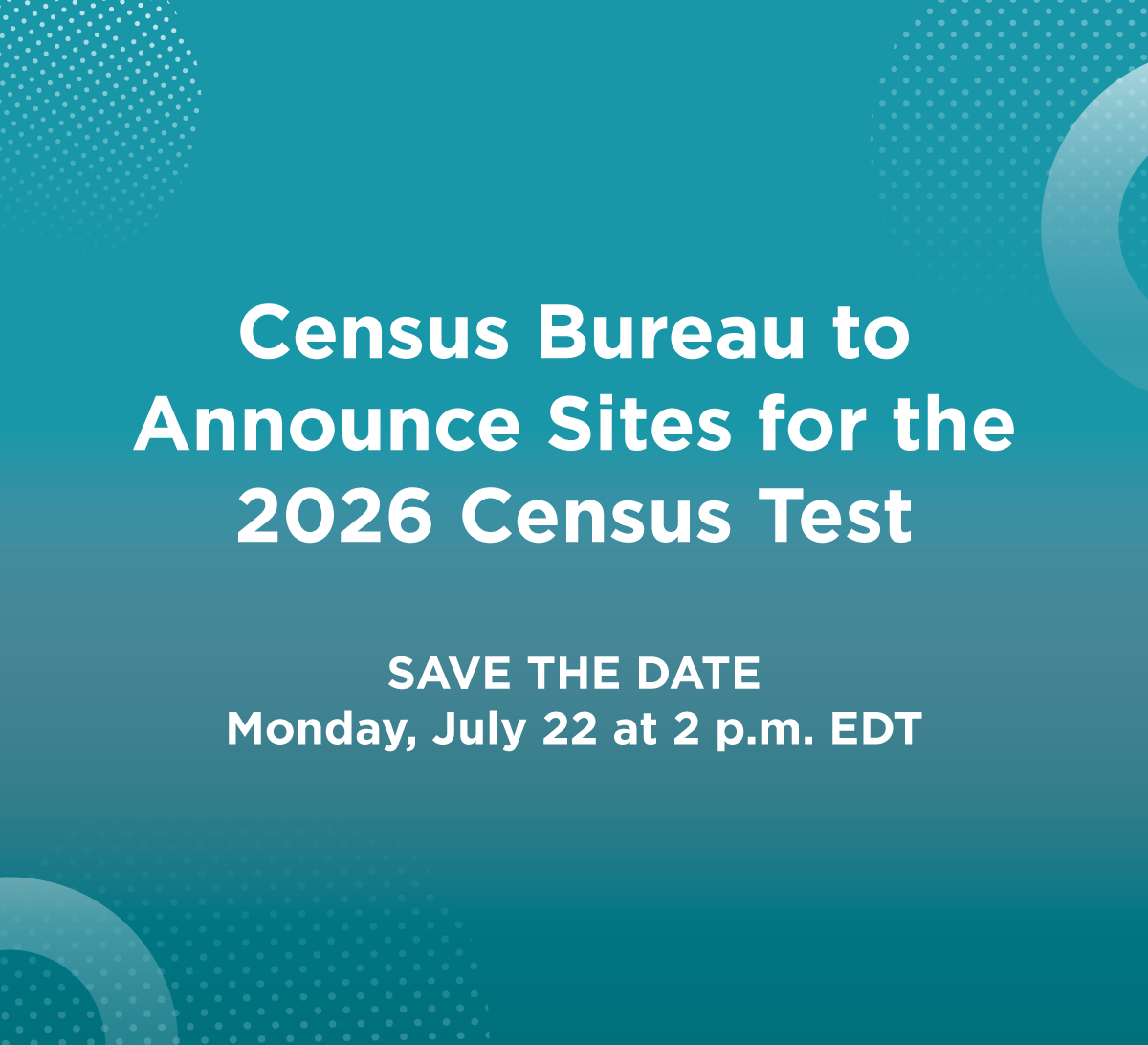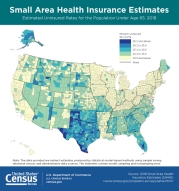
An official website of the United States government
Here’s how you know
Official websites use .gov
A .gov website belongs to an official government organization in the United States.
Secure .gov websites use HTTPS
A lock (
) or https:// means you’ve safely connected to the .gov website. Share sensitive information only on official, secure websites.
-
//
- Census.gov /
- Newsroom /
- News Releases /
- U.S. Census Bureau Releases New Small Area Health Insurance Estimates
U.S. Census Bureau Releases New Small Area Health Insurance Estimates (SAHIE)
For Immediate Release: Thursday, April 09, 2020
U.S. Census Bureau Releases New Small Area Health Insurance Estimates (SAHIE)
Uninsured Rates Rise in 81 Counties and Decrease in 70 Counties
April 9, 2020 — From 2017 to 2018, for the population under age 65, more counties experienced a significant increase (81 counties) in uninsured rates than a significant decrease (70 counties). Likewise, from 2016 to 2017, for the population under age 65, more counties experienced a significant increase (183 counties) than a decrease (79 counties).
These findings come from the Small Area Health Insurance Estimates (SAHIE) program, which is the only source for single-year estimates of the number of people with and without health insurance coverage for each of the nation’s 3,141 counties. The county statistics of coverage status are provided by sex, age groups, and at income levels that reflect thresholds for state and federal assistance programs. State estimates include health insurance coverage data by race and Hispanic origin.
SAHIE are available at the county level from 2006 to 2018. The most recent two years differ from the three prior years, where annual decreases in uninsured rates were more prevalent across counties. From 2015 to 2016, eight counties experienced a significant increase and 629 counties experienced a significant decrease. Four counties experienced a significant increase in uninsured rates from 2014 to 2015, while 2,239 counties experienced a significant decrease. Only one county experienced a significant increase in the uninsured rates from 2013 to 2014, while 2,325 counties experienced a significant decrease in uninsured rates.
Other highlights include:
- The median county uninsured rate for the population under age 65 remained at 10.6% in 2018, the same as in 2017. Estimated county uninsured rates ranged from 2.4% to 32.2%.
- The Northeast and Midwest had the highest portion of counties with low (below 10.0%) uninsured rates. The South had the highest portion of counties with high (above 15.0%) uninsured rates.
- In 2018, for the population under age 65, over one-third (37.7%) of all U.S. counties (3,141) had an estimated uninsured rate below 10%, which is a slight decrease from 2016 (38.6%) and 2017 (38.4%). However, as recently as 2013, only 4.1% of counties had an uninsured rate below 10%.
- For working-age adults, ages 18 to 64, living at or below 138% of poverty, county uninsured rates ranged from 5.3% to 58.6%. The median county uninsured rate among this population was 22.1%.
- In states that expanded Medicaid eligibility, 7.9% of counties (119 of 1,498) had an estimated uninsured rate above 20% among working-age adults living at or below 138% of poverty, compared to 80.8% of counties (1,327 of 1,643) in states that did not expand.
- State uninsured rates varied by race and ethnicity. In 2018, non-Hispanic whites had lower estimated uninsured rates than both Hispanics and non-Hispanic blacks under age 65 in every state and the District of Columbia. Hispanics had higher estimated uninsured rates than both non-Hispanic whites and blacks under age 65 in every state and the District of Columbia.
The 2018 SAHIE report describes demographic and economic differences in health insurance status across states and counties, as well as trends in health insurance coverage. For more information, view the interactive data and mapping tool. This tool allows users to create and download state and county custom tables, thematic maps and time-trend charts for all concepts available annually for 2006 through 2018.
No news release associated with this report. Tip Sheet only.
###
Share
Contact
 Yes
Yes
 No
NoComments or suggestions?


Top



